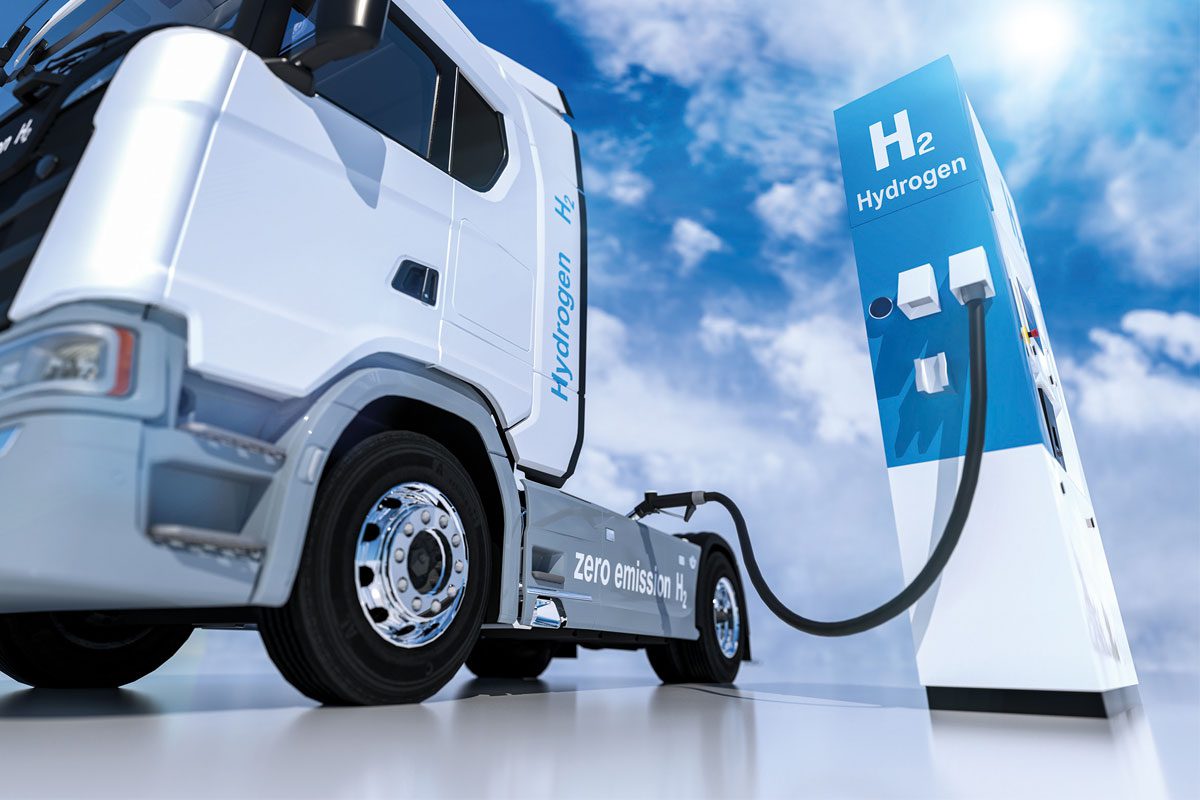The race is on to develop the technology to exploit hydrogen fuel, widely regarded as offering the most promising pathway to a zero-carbon economy. And while it took over 40 years to bring solar and wind power to cost parity with legacy energy sources, those banking on hydrogen (everyone, it seems) are hoping to squeeze that development work into a much shorter timeframe. Envirotec surveys recent progress.
On numerous levels, the planned roadmap to hydrogen seems to involve a hopeful crossing of fingers, that many of the blunders that accompanied past technology rollouts won’t happen this time. Given hydrogen’s potential to offset carbon emissions, it would be a galling development if these gains were to be undermined by leaks, for example, a topic that seems to have been on the agenda of numerous advisory groups in recent months.
Leaks from generation and distribution facilities have provided one of the embarrassing backstories to the story of natural gas, something that – it has become clear – is far more widespread than was always claimed. With hydrogen set to use much of the same infrastructure of pipelines, generation and end-user combustion, many experts have warned that a special effort must be made to avoid anything similar.
A study released in April by the UK government’s BEIS explained that hydrogen is a more potent greenhouse gas than was previously assumed (about twice as much), although its warming effects are indirect, and are attributed to its interaction with other gases in the atmosphere, which in turn lead to increases in other GHGs, specifically methane and ozone.
The recognition of this warming potential has heightened a sense of urgency around making sure the infrastructure for hydrogen is designed from the start to be secured against leaks. Speaking to Bloomberg in June, Ilissa Ocko of the Environmental Defence Fund emphasized the caveat as “not to say ‘no’ to hydrogen but to think about how we deploy it.”
Of course, when it comes to leaks, the more obvious concern is hydrogen’s readiness to combust (as some might recall from high-school science experiments, and the audible “pop” that accompanied exploration on this issue).
Plugging the gap
Detecting leaks might be expected to form a crucial first-line-of-defence, and recent weeks have seen funding announcements in the area of gas detection systems for hydrogen.
In June, Robert Gordon University announced it had received £33k pump priming funding from the Scottish Government to research the fabrication of “a new hydrogen gas leak detection sensor to support the safe expansion of clean hydrogen energy into daily life”.
The group will work with the National Subsea Centre and the Net Zero Technology Centre on the project, which will also exploit expertise in microsystems and microsensors at the University of Berlin.
Safety is particularly a concern during transport and storage. As project lead Professor James Njuguna of RGU explained: “Hydrogen can be a clean and dense source of energy but, when in gaseous state, it can spread quickly through the air with no colour, taste, or smell.” Expanding its use will require highly sensitive hydrogen detection.
Hydrogen’s combustibility has made the use of fuel cells a preferred medium of storage and delivery for many applications, such as hydrogen-powered vehicles. And the hydrogen in this case is either stored under pressure or at very low temperatures. Fuel cells are a highly secure storage medium although costly and still carrying the risk of catastrophic damage in the event of a malfunction.
One area of research is finding safer ways to store it. A study announced in May at the Johann Wolfgang Goethe University, Frankfurt, demonstrates the possibility of using an enzyme derived from a bacteria (whose normal habitat is the deep ocean) to catalyse the conversion of hydrogen and oxygen into formic acid, a liquid that can be stored easily and safely.
In nature the enzyme would go on to digest the formic acid. The team has used genetic engineering to alter the bacteria’s metabolism so as to prevent this additional reaction.
In the transport space, the most powerful use-case for hydrogen fuel cells is with commercial trucking. In February, Aberdeen City Council unveiled the UK’s first refuse collection vehicle (RCV) powered by hydrogen, a Mercedes-Benz Econic running on a 45-kW fuel cell.
The rollout was part of a project investigating how hydrogen-fuelled trucks can reduce emissions in refuse vehicles, called HECTOR (Hydrogen Waste Collection Vehicles in North West Europe) project, which involves seven European trials in total.
Hydrogen fuel cell vehicles and battery-powered electric vehicles are similar in that they both power an electric motor. Both are said to be “emission free at the tailpipe”, in that they don’t emit any carbon while in transit, but there can be emissions involved, depending on the way the electricity or hydrogen is generated in the first place, and method used to transport hydrogen to filling stations.
Refuelling in under 15 minutes is a widely claimed capability, as with the HECTOR vehicles. This is also the case with commercial trucks undergoing trials with Volvo, which the group says are capable of a 1,000-km range.
Electra has announced a zero-emission refrigerated hydrogen fuel cell vehicle, the 19-tonne Electra eCargo, said to be the first of its kind to go into operation in the UK, which will be trialled by the supermarket Sainsbury’s.
One of the major obstacles to using hydrogen vehicles is the scarcity of fuelling stations – at present there are only around 60 in the whole of the US, for example, all located in California, with the number expected to swell to a more 100 by mid-2023.

Plant priming
A relatively unexplored area has been the use of hydrogen in construction vehicles and equipment but recent weeks have seen several announcements. Seemingly driven by a desire to show leadership on decarbonisation, while also improving air quality around urban sites, a recent partnership between construction firm Kier and AFC Energy, the supplier of a zero-emission Hybrid Fuel Cell (HFC) technology, will see trials beginning in 2H 22. Kier plans to lease a Power Tower, which will be used to power on-site cabins.
Another trial will see the production and evaluation of a dual-fuel hydrogen pilling machine, seemingly a world first. The trial will be conducted on a medium-sized pilling rig used in construction, and involves a collaboration between hydrogen fuel vehicle firm ULEMCo, Cementation Skanska, and the building science centre the Building Research Establishment (BRE).
Machines like these can use 100 litres of diesel per day of operation, leading to 262 kg CO2 in emissions. ULEMCo’s Amanda Lyne says the trial is planned “to show that conversion to dual-fuel will save up to 50% CO2 in this duty cycle, while also providing emissions benefits such as reduction in NOx and particulates.”
Grid goals
Some of the impetus for deploying hydrogen has come from the appeal of being able to use elements of the existing infrastructure of natural gas transport and use. In the UK, the blending of hydrogen into the gas grid is starting to appear on the horizon.
The government has a target for Britain’s network of gas pipelines to be ready to deliver 20% hydrogen to homes and businesses around the country from 2023, as a replacement for up to a fifth of the natural gas currently used. And the viability of this timeline seemed confirmed by an ENA document published in January, Britain’s Hydrogen Blending Delivery Plan.
In the US, a utility in California, PG&E, announced in May plans to trial different blends of hydrogen and natural gas. However, this will seemingly use a dedicated pipeline system, rather than the transmission network used for natural gas.
A spokeswoman for the firm has acknowledged the concerns in some quarters about the possibility of leaks, as well as the need for “extensive research to understand the feasibility of hydrogen injection within a natural gas pipeline system”, according to an email message reported in Bloomberg in June.
Generating a stir
Seemingly the first ever gas turbine to be powered using hydrogen was announced in June by the University of Stavanger. The research was led by Professor Mohsen Assadi, who said his team had proven that hydrogen can be used in existing natural gas infrastructure without altering much of the initial composition of the structures, although the efficiency of running the turbine with hydrogen will be somewhat less than with gas.
The pressure is also on to identify greener ways of producing hydrogen. So-called “green” hydrogen will likely depend on the electrolysis of water, powered by either nuclear or renewable sources, but this is still a costly and inefficient process. Today, most of the hydrogen being produced comes from natural gas – around 95% of that produced in the US, according a report from the country’s Department of Energy earlier this year.
Light in the tunnel?
Several groups seem to be competing with each other to refine or improve the means by which the electrolysis of water can be powered using solar energy. Two separate projects announced in recent months, by the University of Strathclyde and KAUST, relate to improving the properties of photocatalysts, allowing them to power electrolysis using visible light, an advance on their traditional reliance on ultraviolet.
Despite the many challenges, the race to develop hydrogen seems to be gathering pace – certainly if the volume of announcements is any guide.








